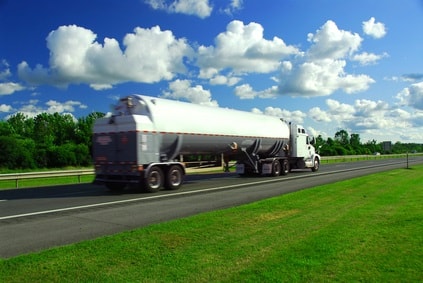Managing a tight fleet means so much more than having a keen eye for organization, timing, and logistics, it also requires a deep understanding of all things compliance. Because most fleets include the use of heavy machinery and trailers galore, you must do your due diligence and get well acquainted with the state and federal safety guidelines that are placed upon these vehicles.

In order to do this, you need to assess all of your trailers for their GAWR, or gross axle weight rating. Interestingly, GAWR doesn’t just include trucks, it’s a standard that encompasses all vehicles, from subcompacts to large commercial trailers.
The first thing that you need to know about GAWR is that it corresponds to the maximum allowable weight that can be placed on each individual axle. This weight limit is not determined by any governing bodies, but rather the automaker of your vehicle. This means that, if you ever have any questions about your vehicle’s GAWR, you must seek out information directly from the manufacturer.
What’s particularly interesting – and rather confusing – about GAWR is that it comes in individual ratings depending on the front axles and the rear axles, but this doesn’t mean that the weights are always different. For example, your vehicle’s GAWR might be 2,550 lbs.; if there is only one number listed, that means that your trailer can properly hold 2,550 lbs. per axle. Remember, the whole point of setting limits on GAWR’s is so that the officials at the U.S. Department of Transportation’s Federal Highway Administration can track your vehicle’s weight as it moves across the United States.
It’s important to note that all states have different compliance laws in regards to weight, so it’s your job as a fleet manager to get to know the details. For example, you must know that Alabama has a different maximum weight limit for trucks with double axles than Alaska does.

An amateur mistake typically made in the area of trailer weight is confusing GAWR for GVWR, otherwise known as the gross vehicle weight rating. Though these two have similarities, they ultimately focus on completely separate issues. Let’s take a look:
Even though these two weights are very different, they are, in fact, connected. If your vehicle doesn’t come equipped with a GVWR but you only have the GAWR, for instance, you can still come up with the number. This can be done by multiplying the GAWR by the number of axles; the answer will give you the GVWR. For vehicles with just one axle, the GAWR and GVWR are exactly the same.
Before we get into safety solutions, let’s first talk about why GAWR is so important in the first place. Generally speaking, the heavier your axle, the more damage the road endures. In fact, every time your axle weight doubles, your trailer will detrimentally impact the surface of the road 16x more than if the axles were kept at a reasonable weight.
And, following GAWR best practices doesn’t just save the roads, it can also save lives. Truck trailers can only handle so much. Following the GAWR, GVWR, and other weight guidelines ensure that you never put yourself in danger of “overloading” a vehicle. As you likely know, when a vehicle, particularly one that is hauling a trailer, is overloaded, the heaviness can lift the front axle of the tow vehicle which can affect its breaking and steering capacity, especially on roads with grades.
To guarantee that no member of your fleet either ends up in an accident due to imbalanced GAWR or ends up with a hefty ticket at the weigh station, always make sure that the trailer’s GAWR is displayed prominently. Though not all manufacturers require for the GAWR to be included on the label, it’s best when it is. Typically, it’s added to the same label that shows the GVWR which is placed on or near the driver’s door. Choose durable transportation plates to ensure readability throughout the life of your assets.
Our sales engineers are experts in automatic asset tracking, tagging and identification,a nd can answer all your questions. Get in touch now.
Lets Talk ›